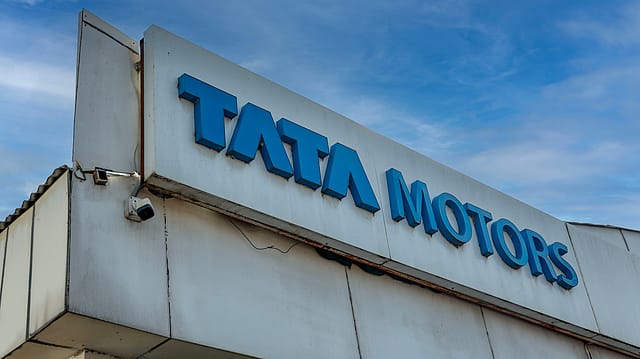Tata Motors hikes commercial vehicle prices by 3% beginning Oct 1
ADVERTISEMENT

Tata Motors, the country’s largest commercial vehicle manufacturer, says the company will be hiking the price of commercial vehicles by up to 3% across its entire range beginning October 1, 2023. The price increase is to offset the residual impact of the past input costs, the company says.
On September 19, the financial markets were closed due to Ganesh Chaturthi. However, ahead of the price hike announcement on Monday, the share price of Tata Motors closed 1.02% higher at ₹640.60. At present, the share price of the company is trading at 3.71% lower than the 52-week high of ₹665.30, which the company touched on July 26 this year.
Shares of Tata Motors are trading 70.59% higher than the 52-week low of ₹375.5, which the company touched on December 26 last year. During the session, the company’s market capitalisation stood at ₹2.12,827.6 crore as more than 4.29 lakh shares exchanged hands as against the two-week average of 4.85 lakh shares.
This is the second time Tata Motors has hiked the price across its entire range of commercial vehicles this year. In April, the company hiked the commercial vehicle prices by 5%. The company cited the decision to be in line with Tata Motors' efforts to comply with the move to more stringent BS6 Phase II emission norms.
December 2025
The annual Fortune 500 India list, the definitive compendium of corporate performance, is out. This year, the cumulative revenue of the Fortune 500 India companies has breached $2 trillion for the first time. Plus, find out which are the Best B-schools in India.
"As Tata Motors transitions its entire vehicle portfolio to meet these standards, customers and fleet owners can expect a range of cleaner, greener, and technologically superior offerings that deliver higher benefits and lower total cost of ownership. The price increase will be applied across the entire range of commercial vehicles, with the exact amount varying according to the individual model and variant," the company had said.
Notably, the company has hiked the price of its passenger vehicles four times this year, in order to offset higher input costs. In July, the company hiked the price by 0.6% across ICE (internal combustion engine) and EV (electric vehicle) models and variants. In February, April and May the company hiked prices by 1.2%, 5% and 0.6% across models and variants, respectively, owing to higher input costs and compliance with BS-VI norms.
In the April to June quarter of FY24, the company’s passenger vehicle segment posted a strong growth of 8% to 1,40,450 units in the June quarter, buoyed by new launches and a strong SUV (sports utility vehicle) and EV portfolio. The company’s EV sales, in the June quarter, surged by 105% to 19,346 units as against 9,446 units in the same period last year. Of this, the company sold 7,025 units in June, registering an increase in sales by 95%, as against 3,608 units in the same period last year.
